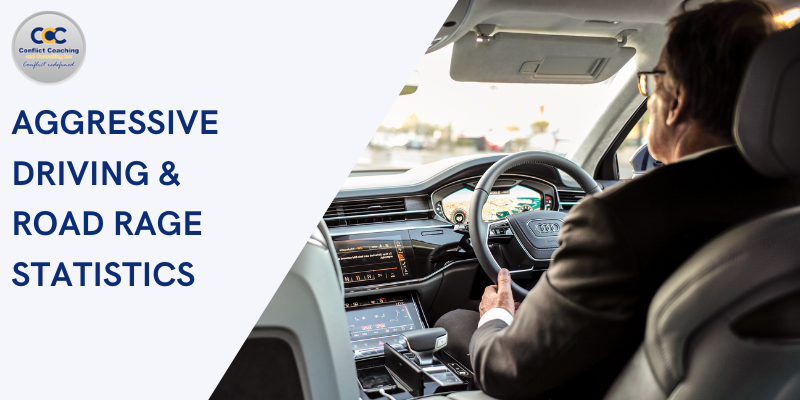
20 Key Aggressive Driving and Road Rage Statistics
Every time we get behind the wheel, we expect to reach our destination safely. But across the U.S., more drivers are taking risks that put lives in danger.
Aggressive driving—things like speeding, tailgating, cutting others off, or running red lights—is becoming more common, and the results are often deadly.
Since the pandemic, many people feel that drivers in their area have gotten worse. Whether it’s due to stress, traffic, or frustration, aggressive behavior on the road is on the rise.
And it’s not just about being rude or impatient—these actions are directly linked to serious crashes, injuries, and even deaths.
This blog takes a closer look at the numbers behind this growing problem. We’ll share the most recent aggressive driving statistics and what they say about the habits and attitudes of American drivers today.
You’ll learn who is most likely to drive this way, when and where it happens most often, and how it affects safety on the road.
20 Key Aggressive Driving and Road Rage Statistics
Aggressive driving continues to pose a serious threat to road safety across the United States.
From speeding and tailgating to road rage incidents involving firearms, the numbers paint a disturbing picture of just how common and dangerous this behavior has become.
This section explores what recent data from the AAA Foundation for Traffic Safety, NHTSA, Pew Research, and other credible sources reveal about aggressive driving habits, public perception, crash risk, and demographic profiles.
1. How Dangerous Do Drivers Believe Aggressive Driving Behaviors Are?
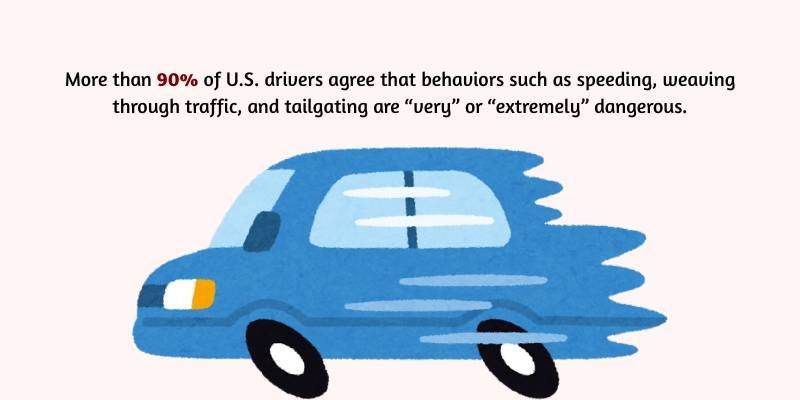
According to the AAA Foundation’s Traffic Safety Culture Index, more than 90% of U.S. drivers agree that behaviors such as speeding, weaving through traffic, and tailgating are “very” or “extremely” dangerous.
Yet despite this near-universal awareness, a majority still engage in them.
This perception gap highlights a troubling truth: knowing something is dangerous doesn’t always translate to safer behavior. Understanding how dangerous aggressive driving is has never been more urgent.
2. What Situations Most Commonly Trigger Aggressive Driving?
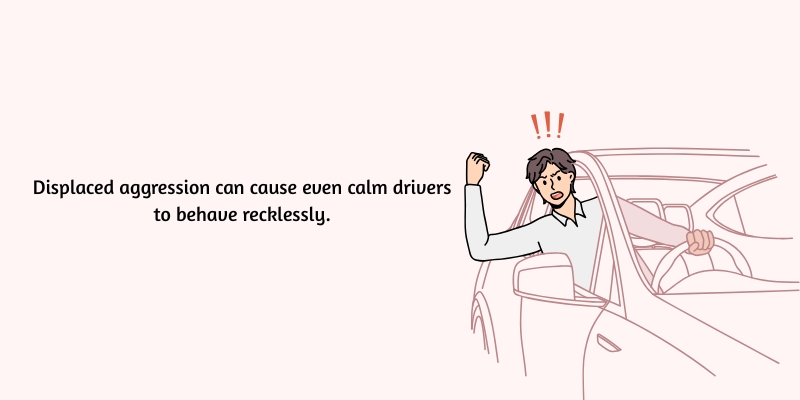
Running late, heavy traffic, and personal stress top the list of triggers.
NHTSA research shows that displaced aggression—bringing frustration from other areas of life into driving—can cause even calm drivers to behave recklessly.
These aggressive driving facts explain why prevention must address emotional regulation, too.
3. Would the People You Value Approve of Aggressive Driving?
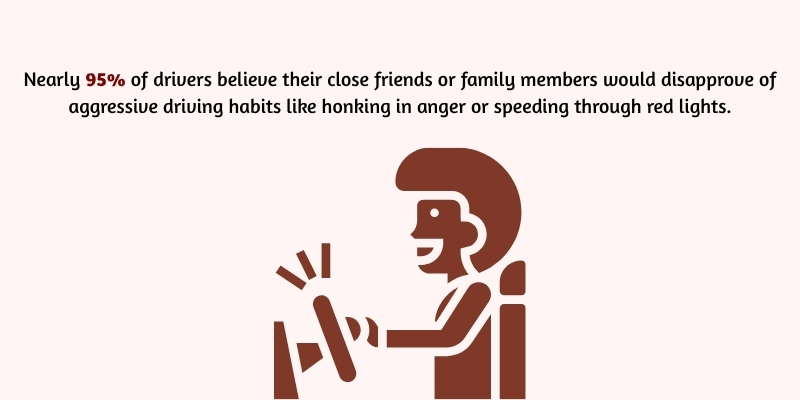
Nearly 95% of drivers believe their close friends or family members would disapprove of aggressive driving habits like honking in anger or speeding through red lights.
These findings tie directly into how peer approval of unsafe driving influences decision-making behind the wheel.
Even if a behavior is socially discouraged, frustration and stress often override judgment in the moment.
4. What Percentage of Drivers Engaged in Aggressive Driving at Least Once Last Year?
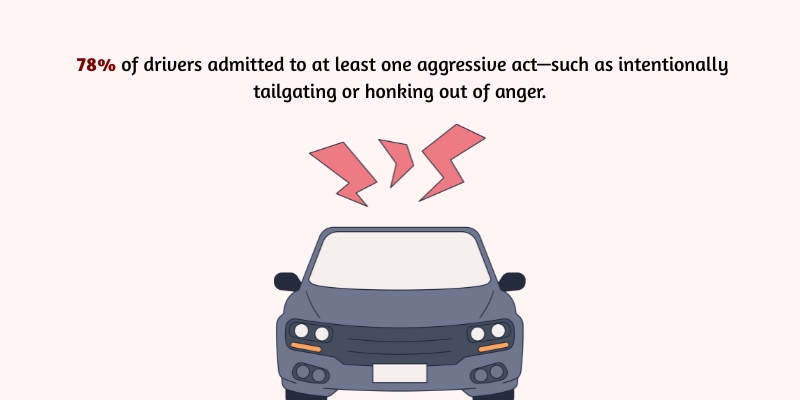
A AAA survey found that 78% of drivers admitted to at least one aggressive act—such as intentionally tailgating or honking out of anger—in the past year.
This contradiction highlights why education alone may not be enough, and why the consequences of aggressive driving need greater visibility in road safety discussions.
5. How Often Do Drivers Engage in Aggressive Behavior Over a 30 Day Period?
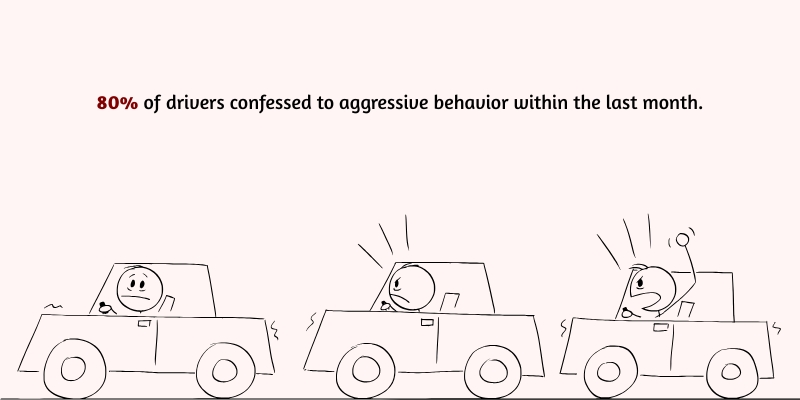
According to the AAA Foundation, nearly 80% of drivers confessed to aggressive behavior within the last month.
Common acts included tailgating, switching lanes aggressively, and speeding.
These self-reported driving behaviors show how normalized aggression has become on U.S. roads—raising the question of how common aggressive driving is and whether perception alone can change behavior.
If you’re ready to break the cycle and take control behind the wheel, enrolling in an online aggressive driving class can help you build safer, more mindful driving habits.
These courses help you recognize the root causes of aggressive behavior, improve emotional regulation, and adopt safer responses to stressful driving situations.
With flexible scheduling and expert-led modules, you’ll gain practical tools to stay calm, focused, and in control—ultimately protecting yourself and others on the road.
6. What Level of Speeding as a Socially Accepted Aggressive Behavior?
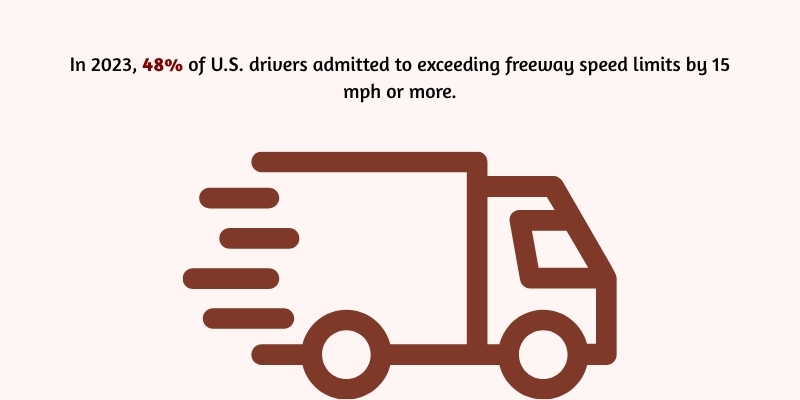
Speeding remains the most socially accepted form of aggressive driving. In 2023, 48% of U.S. drivers admitted to exceeding freeway speed limits by 15 mph or more.
This behavior is so commonplace that it’s often seen as routine rather than risky, despite the fact that freeway speeding is a leading cause of fatal crashes and serious injuries.
7. To What Extent Does Aggressive Driving Contribute to Fatal Crashes?
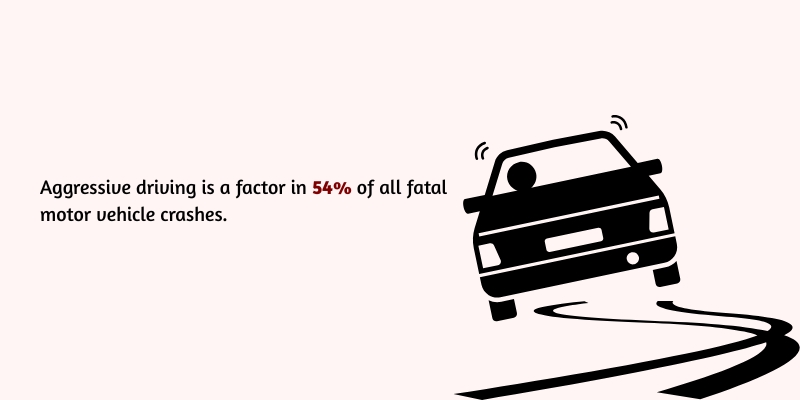
Aggressive driving is a factor in 54% of all fatal motor vehicle crashes, according to the AAA.
Behaviors like unsafe lane changes, racing, and driving too fast for conditions significantly increase the crash likelihood based on behavior.
In 2023 alone, speeding caused 11,775 deaths—one of the clearest indicators of just how deadly aggression behind the wheel can be.
8. What Is the Typical Profile of an Aggressive Driver?
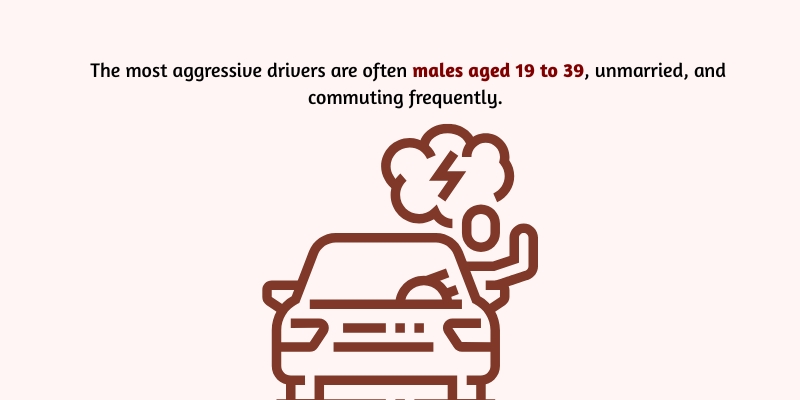
Data shows they are often males aged 19 to 39, unmarried, and commuting frequently.
These drivers typically operate newer vehicles and spend more time on the road—making them more vulnerable to stress-induced aggressive behavior.
Understanding the typical aggressive driver profile can help target safety programs more effectively.
9. Which Age Group is Most Likely to Engage in Aggressive Driving?
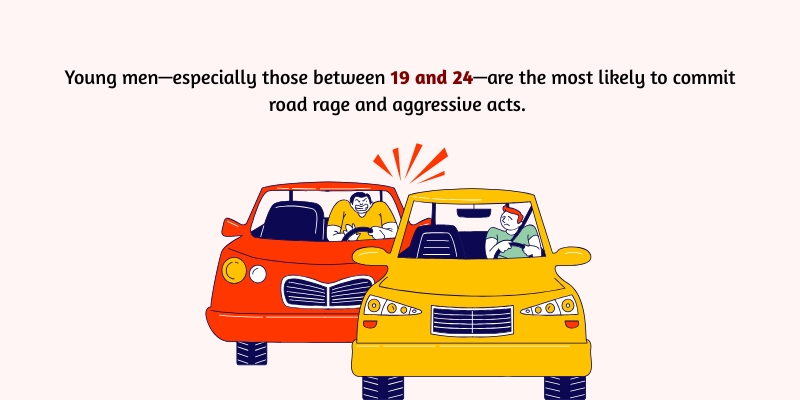
Young men—especially those between 19 and 24—are the most likely to commit road rage and aggressive acts.
Pew and AAA data confirm this group is also more prone to retaliatory behaviors, such as honking, flashing lights, or tailgating.
10. What Are the Geographic Patterns in Aggressive Driving?
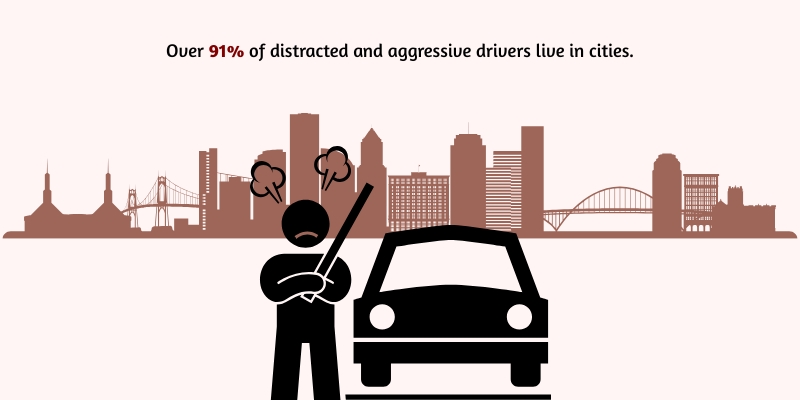
Aggressive drivers are more common in urban traffic areas, where congestion, tight spaces, and longer commutes amplify stress.
According to Geotab, over 91% of distracted and aggressive drivers live in cities. This pattern reinforces regional targeting for safety campaigns based on road rage statistics by state and city.
11. What Types of Vehicles Are Most Commonly Driven by Aggressive Drivers?
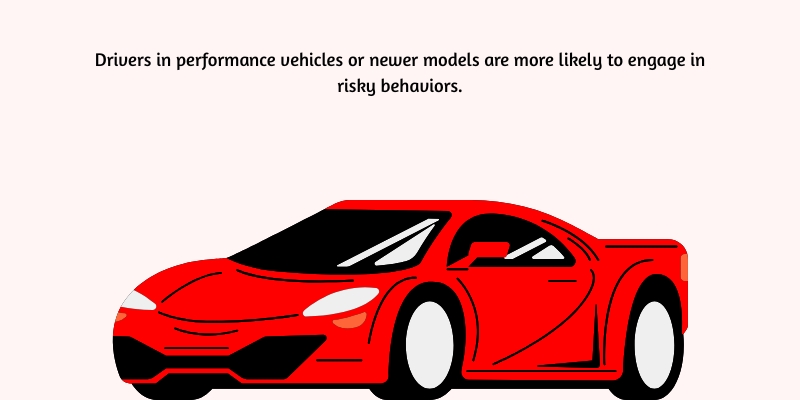
Vehicle type plays a role in aggression. Drivers in performance vehicles or newer models are more likely to engage in risky behaviors—particularly when visibility is limited or the environment is stressful.
Some studies have even found that convertible drivers honk sooner and more often when the top is up.
12. Which Aggressive Driving Behaviors Are Most Likely to Cause Crashes?
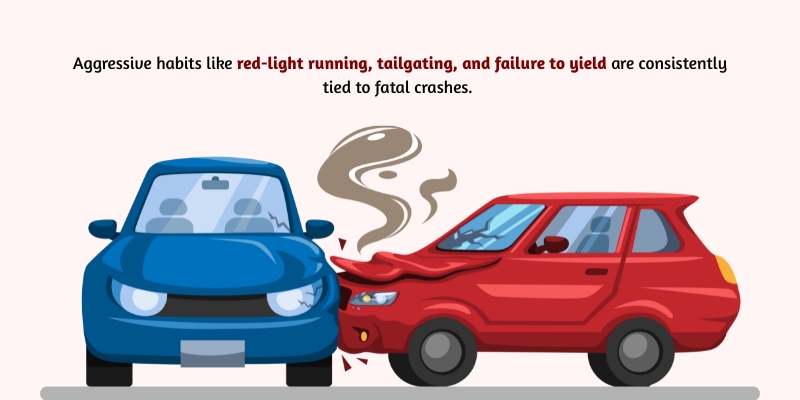
Aggressive habits like red-light running, tailgating, and failure to yield are consistently tied to fatal crashes.
Data from FARS shows that crash involvement rises dramatically when drivers engage in more than one form of risky behavior.
These aggressive driving accidents not only cost lives but also face legal and financial consequences.
13. Are There Gender-Based Differences in Aggressive Driving?
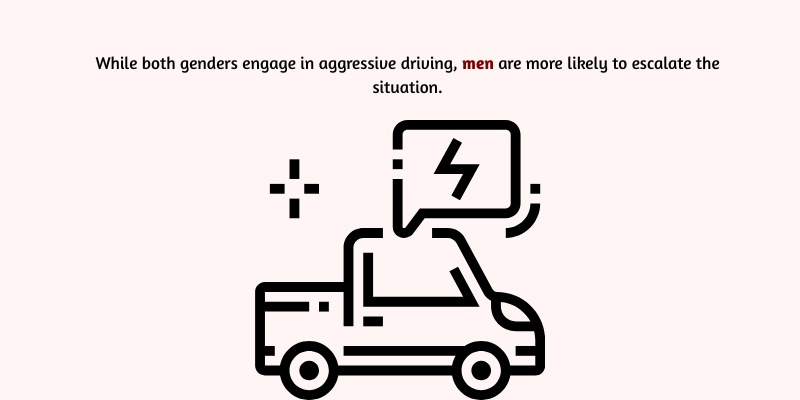
While both genders engage in aggressive driving, men are more likely to escalate the situation.
According to AAA data, they’re twice as likely to confront another driver, block lane changes, or even bump another vehicle.
Still, men and women are considered equal offenders when it comes to mild forms of road rage, like honking or tailgating.
14. Is Aggressive Driving More Common During Rush Hour Than Off-Peak Times?
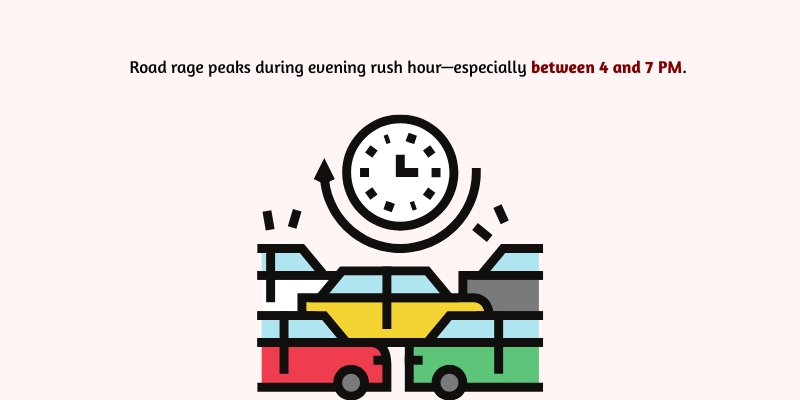
Yes, road rage peaks during evening rush hour—especially between 4 PM and 7 PM.
Social media analysis reveals more posts using “#roadrage” during this window than any other time of day, confirming that high traffic density increases tension and aggressive behaviors.
Is your commute contributing to road rage? Probably!
15. Which U.S. States Have the Highest Rates of Aggressive Driving?
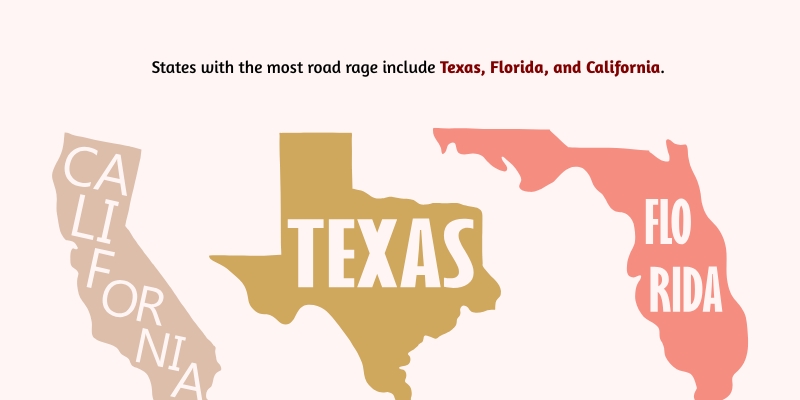
States with the most road rage include Texas, Florida, and California.
However, when ranked by percentage of fatal crashes caused by aggression, Rhode Island, Wyoming, and Washington, D.C., top the list.
These worst road rage cities and states should be focal points for legislative action and public campaigns.
16. What Percent of Drivers Support Automated Enforcement Measures Against Aggressive Driving?
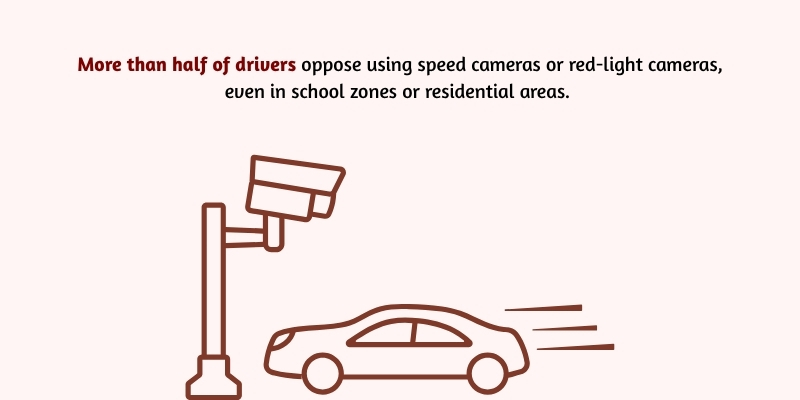
Surprisingly, more than half of drivers oppose using speed cameras or red-light cameras, even in school zones or residential areas.
This resistance comes despite wide acknowledgment of the dangers posed by aggressive driving.
Concerns over privacy and fairness fuel skepticism toward automated enforcement, even as speed cameras have been shown to reduce crashes and support speed management programs.
17. How Likely Is a Driver to Be Caught by the Police for Aggressive Driving?
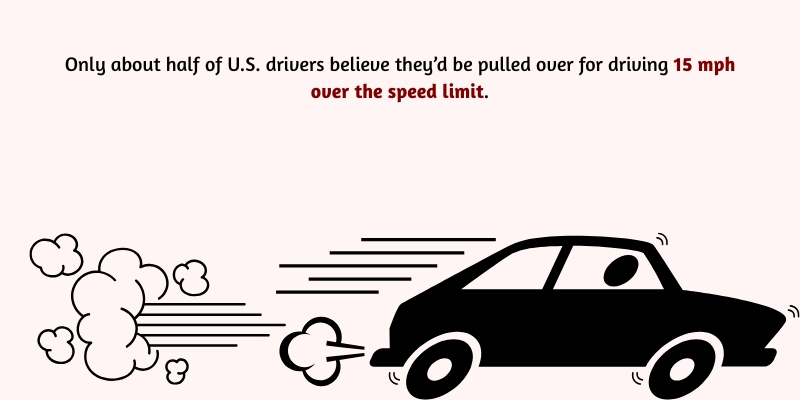
Only about half of U.S. drivers believe they’d be pulled over for driving 15 mph over the speed limit, and even fewer expect consequences for aggressive tailgating or blocking lane mergers.
This low expectation of enforcement—despite the rise in aggressive driving incidents—increases the likelihood of risky behaviors.
According to NHTSA, stronger traffic enforcement awareness can be an effective deterrent when paired with public safety campaigns.
18. What Are the Legal Penalties for Aggressive Driving in Each State?
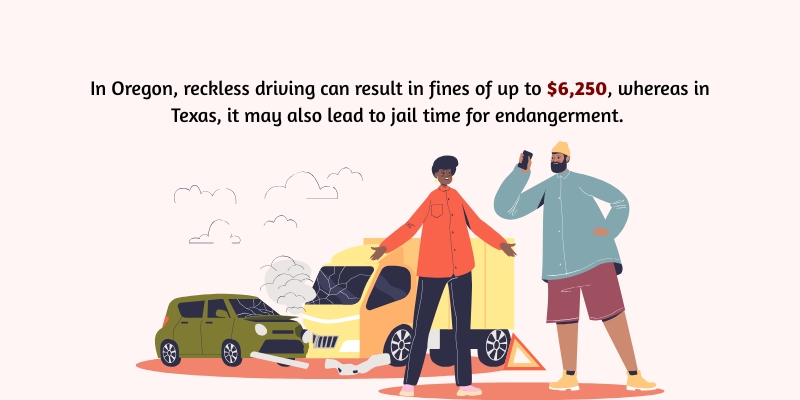
Penalties vary significantly. In Oregon, reckless driving can cost up to $6,250 in fines, while Texas allows jail time for endangerment.
Few states have specific laws and consequences for road rage; most incidents are prosecuted under general assault, reckless endangerment, or vehicular homicide laws.
19. How Do Aggressive Driving Incidents Impact the Public and Private Economy?
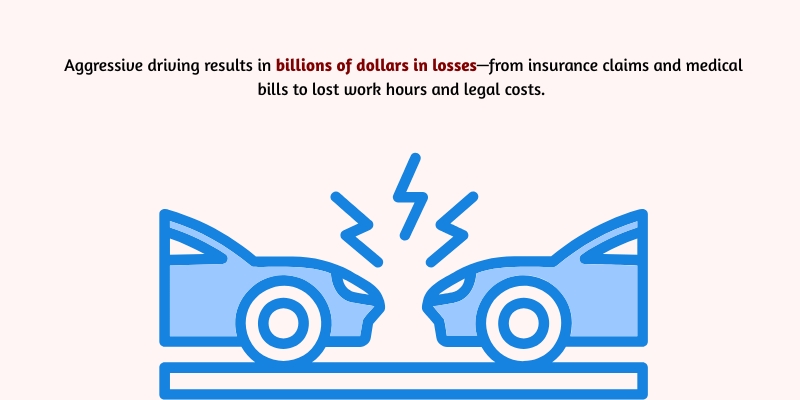
Aggressive driving results in billions of dollars in losses—from insurance claims and medical bills to lost work hours and legal costs.
The United States Department of Transportation estimates that the ripple effect of these incidents drains both public resources and private income.
20. How Does Aggressive Driving Affect Car Insurance Rates?
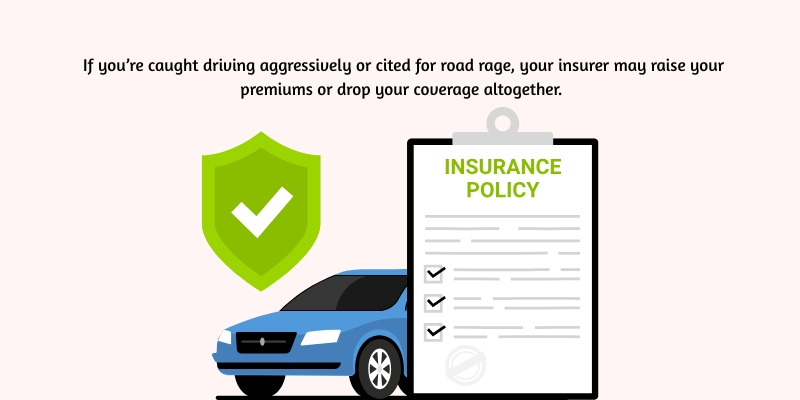
If you’re caught driving aggressively or cited for road rage, your insurer may raise your premiums or drop your coverage altogether.
Since most policies exclude intentional acts, road rage incidents may leave drivers paying for damages out of pocket. That’s a costly price for a moment of anger.
Conclusion
Aggressive driving isn’t just a moment of anger or impatience—it’s a serious risk to everyone on the road.
As the data shows, behaviors like speeding, tailgating, unsafe lane changes, and road rage are far too common across the United States.
While many drivers recognize these actions as dangerous, that awareness hasn’t stopped millions from doing them anyway.
What’s especially concerning is how often aggressive driving leads to crashes, injuries, or even fatalities.
Whether it’s happening during rush hour in a busy city or on a quiet stretch of highway, these choices have real consequences.
And they don’t just affect the driver—they put passengers, pedestrians, and other road users in harm’s way too.
The aggressive driving statistics shared in this blog point to a clear truth: changing driver behavior is critical.
Law enforcement, public awareness campaigns, and personal responsibility all have a role to play in reversing these trends.
If you’re a driver, taking a few extra seconds to cool down or give someone space could save a life. It’s not just about avoiding tickets or accidents—it’s about making the road safer for everyone.
Let the numbers serve as a wake-up call—and a reminder that small changes in attitude can make a big difference behind the wheel.





Responses